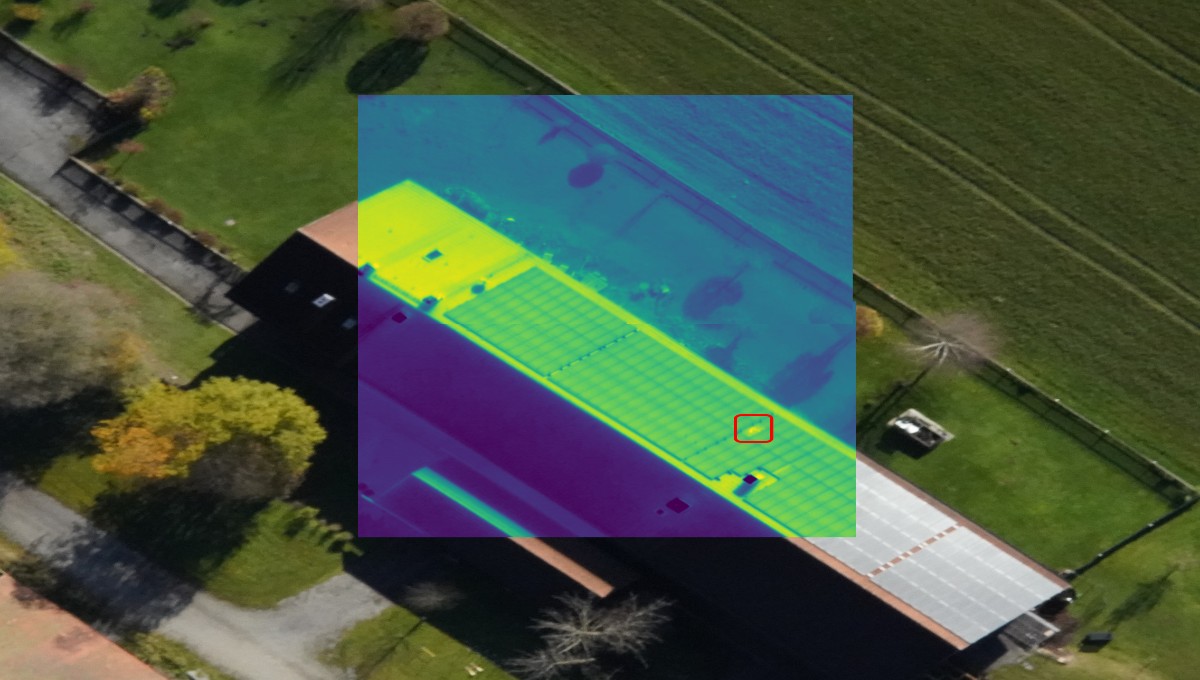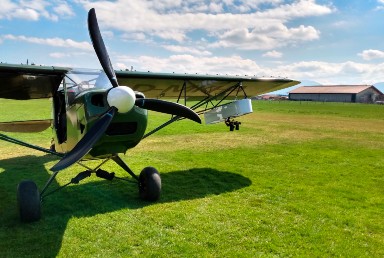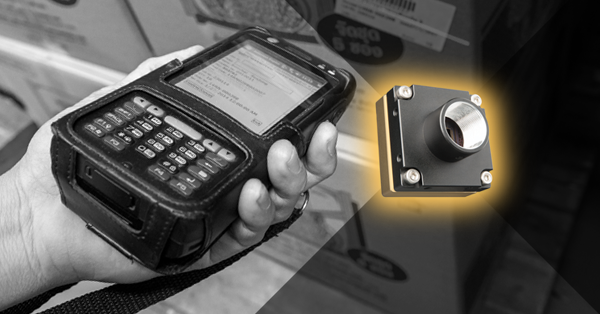A pivotal moment in thermal solar inspection: New AI-based aerial trial cuts the cost of detecting PV defects by 80%

Solar power is one of the world’s leading sources of sustainable, clean energy, but maintaining and monitoring panels can be prohibitively expensive. Many companies use drones to detect defects in solar farms; now a government-funded trial in Germany is making aerial inspections more effective and commercially viable by incorporating Teledyne FLIR thermal imaging technology.
Spearheading this innovative inspection method is a Teledyne FLIR Premium Partner in Germany: TOPA GmbH. It is working in tandem with engineering company AID GmbH to develop an AI-based system that will ensure images captured on manned flights are fully geo-referenced and automatically detect and classify defects on solar panels.
This breakthrough technology allows inspectors to identify and accurately locate faulty solar panels, thus speeding up the process of replacing faulty components and minimising damage to surrounding units from overheating circuits.
Skilled co-pilots driving inspection innovation: TOPA and AID
TOPA GmbH is a specialist industry integrator for high-quality measurement technology and thermography. As a master distributor of FLIR and EXTECH products, it exclusively offers FLIR technology for implementation across a vast range of challenging applications.
AID GmbH is an engineering company that specializes in safety-critical technology used in manned and unmanned aircraft. Its customers range from civil new technology start-ups in the aviation industry, manufacturers of military drones and advanced aviation technology.

An array of savings: inspection at speed
With the support of a government-funded grant, AID and TOPA are using FLIR thermography to drive down the cost and time constraints of inspecting solar panels at scale.
A drone can take weeks to inspect a solar farm, while manual on-the-ground inspections can take months, making it less efficient still. However, aerial inspections in planes travelling at high speeds makes accurate inspection a challenge.
The solution? A manned aircraft paired with fully autonomous artificial intelligence interpreting and geo-referencing, and defect detection in real-time.
In the trial, a manned aircraft flying at 300 m is paired with a FLIR A700 to capture accurate thermal readings of solar panels at speed. However, traveling at 30 m/s means that image blur and distortion are an acute concern, given that thermal cameras require between 8-10 milliseconds to capture imagery. To combat this and ensure that images are clear and the data usable, AID was able to implement an ingenious solution using geometry that ensures that images are clear and the data usable and informative.
This developing high-speed inspection method can cover up to 2 km2 per hour, enabling it to yield accurate readings of large-scale solar farms in just a few hours.
The difference in price is impressive. Compared to a drone inspection (for example, via Copterdrone), it would cost a 10 kWp plant roughly €246. With TOPA and AID’s innovative AI-led approach, the trial system costs just €49 to inspect the same area. That’s a substantial saving of 80%.
Detecting defective heat dissipation down to the exact unit
You may be thinking ‘where does the AI come into play?’. The AI being perfected by TOPA and AID takes the readings from the FLIR A700 and calculates which panels are overheating or in danger of overheating by monitoring their recorded temperature and detecting and classifying the detects.
Defective units are much hotter than their functional counterparts as heat is unable to dissipate and continues to build up within faulty panels. Worse still, this can act to successively take out surrounding units as they degrade—meaning that locating a defective solar panel early is essential to protect assets and minimise further damage.
The AI being developed collates all this active thermography data and maps out a fully georeferenced location to each image, allowing faulty units to be rooted out at the source, minimizing manual labor and maintenance costs.
Alexander Prendinger, managing director of AID Innovation, said: “We are thrilled to be developing a system that aims to enhance the efficiency of solar panels to contribute to the global fight against climate change.
“The FLIR A700 is the perfect match for this trial. It’s the ideal combination between cost and function, giving insightful thermal images while being lightweight enough to work optimally with the gimbal set-up.
“We are very satisfied with the product and the support of Teledyne FLIR, which was one of the main reasons why we chose to partner with them.”


